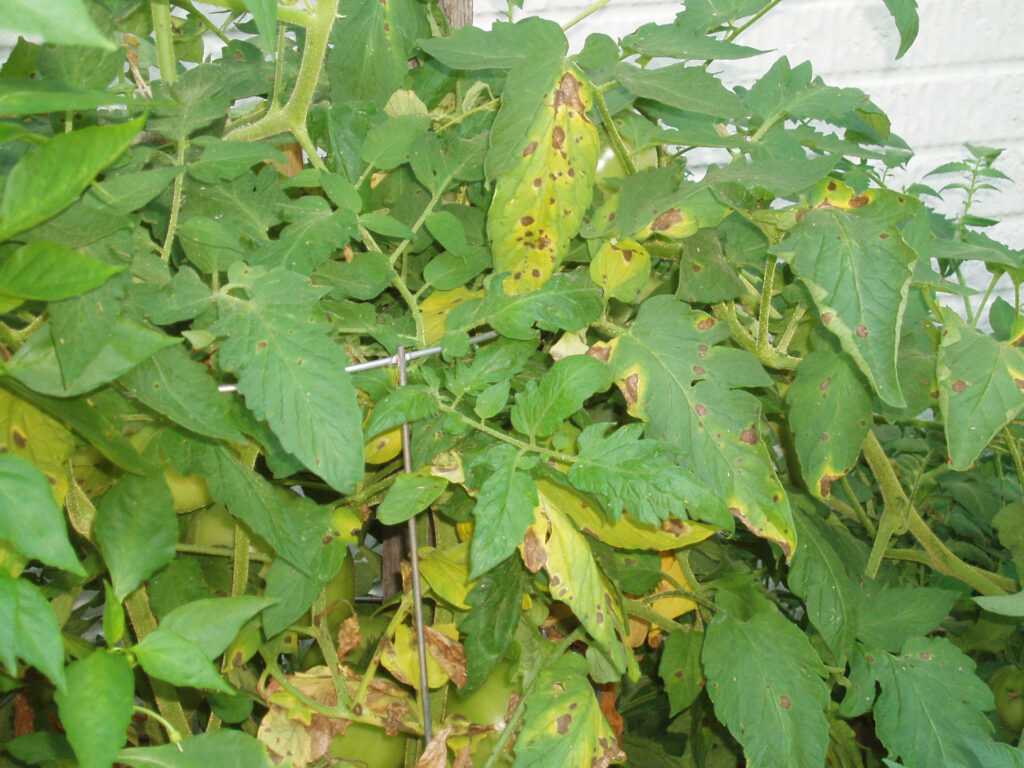How To Stop Verticiliam In Tomatoe Plants

Introduction of Verticillium
Verticillium is a genus of soil-borne fungi that cause vascular wilt diseases in various plants. Verticillium dahliae and Verticillium albo-atrum infect a wide range of crops and ornamental plants. Tomato plants can also be affected by this fungal infection. Verticillium persists on plant material and forms threads that infect plants through the root hairs. Early spring, with cool and wet conditions, is ideal for Verticillium. If the soil is moist and the temperature is around 75 degrees Fahrenheit (24 Celsius), it is ideal for the fungus to start infecting roots.
Signs of Verticillium Wilt on Tomatoes
The infection usually begins in spring but you may not see signs of it until summer. At first Verticillium attacks the older leaves and the leaves become yellow. Then the yellow color of leaves turn into the color of brown. After that the leaves die.
Discoloration of vascular tissue can be caused by this disease. If verticillium attack your tomato plant, you will see brown streaks up the stems of tomato plants. Patchy discoloration also can be noticed. Sometimes the leaves start to curl upward and drop too. This disease can stunt the entire plant and individual fruits.
Let’s learn about the signs in details –
Wilting: During the warm season the leaves may wilt.
Yellowing Leaves: Verticillium attacks the lower leaves and the leaves turn yellow and may drop off.
Stunted Growth: When verticillium attacks tomato plants, the Plants may exhibit reduced growth and vigor.
Vascular Discoloration: This disease can observe a brown or dark streaking in the vascular tissue when stems are cut.
Leaf Curling: Leaf curling is caused by Verticillium. Leaves distort as the disease progresses.
Early Fruit Drop: Early fruit drop can be happened too as flowers may drop prematurely and lead to reduced fruit set.
The Disease Cycle of Verticillium Wilt
Survival in Soil: It is a fungus which can persist for years without a host as microsclerotia.
Infection: When the soil is typically in moist and warm conditions, the Verticillium wilt can infect plants through the roots.
Vascular Spread: After infecting the roots, the Verticillium spreads through the plant’s vascular system (xylem), disrupting water and nutrient transport.
Symptom Development: Many exhibit symptoms can be seen in a plant after infecting, such as wilting, yellowing of leaves, stunted growth, and browning of vascular tissues.
Plant Death: Many of the time if the infection is extensive, the infected plant may die.
Sporulation and Soil Reinfestation: New spores and microsclerotia can be produced from infected plant tissues, contributing to soil reinfestation and continuing the cycle.
Management Considerations
To break the cycle and reduce the disease’s impact, you have to follow the rules for implementing effective management practices, including crop rotation, sanitation, and the use of resistant varieties.
Preventing Verticillium Wilt of Tomato
Prevention is better than using fungicide in your tomato plants.
Let’s learn how you can prevent Verticillium wilt of tomatoes-
Choose Resistant Varieties: Resistance varieties could be selected for planting. You should choose the tomato varieties like “V” that are specifically bred for resistance to Verticillium wilt.
Crop Rotation: Plant non-susceptible crops such as corn or beans instead of tomato plants for at least 3 years. Crop rotation can help to reduce soil borne pathogens.
Soil Health: Balanced fertilizer and mulching improve soil structure and add organic matter. By adding organic matter, the soil becomes healthy and easily prevents Verticillium wilt of tomato plants.
Water Management: Though water is very important for every plants but over water can cause verticillium wilt. Always try to avoid over watering which can promote fungal growth and also you have to ensure good drainage to prevent waterlogged conditions.
Sanitation: Cleaning is very important to remove debris and practice good garden hygiene to minimize sources of fungal infection.
Mulching: To keep the soil moisture, you should use organic mulch. Mulching is also helpful to regulate soil temperature.
Monitoring and Early Detection: Regular monitoring can help to detect Verticillium wilt easily. If you can notice the early signs of this disease, then you can act quickly to remove infected plants to prevent spread.
Conclusion
By implementing a combination of these strategies will help you to prevent Verticillium wilt of tomato plants. All the ideas can provide the best results in managing Verticillium wilt.
